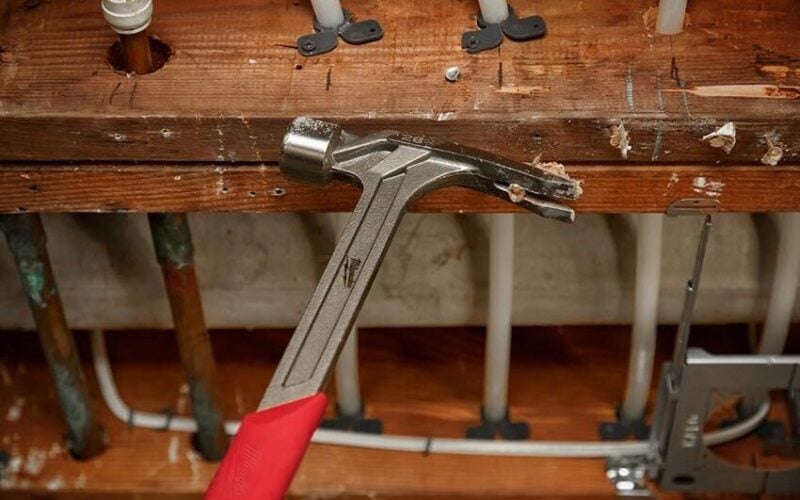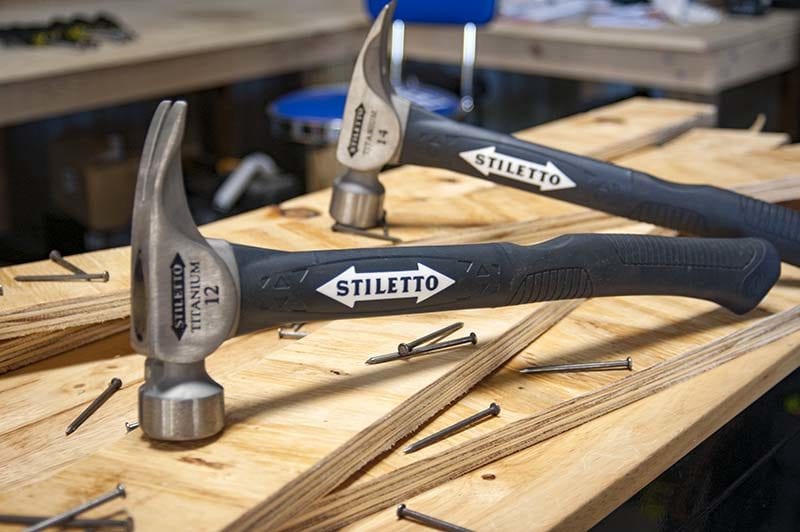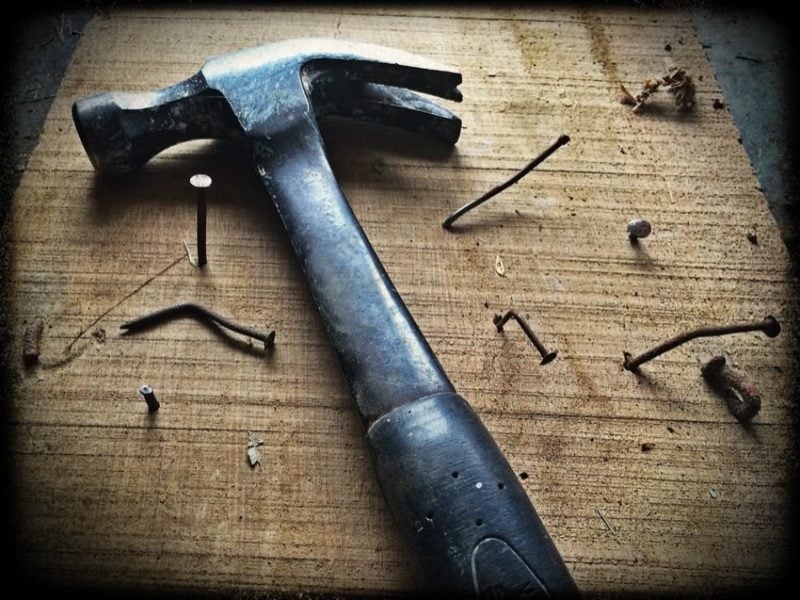Picking the right tool for the right job will mean less user fatigue and a more professional job when done. When people talk about a claw hammer vs framing hammer, they really just need to understand what each term means. While you may consider it a debate, the true question deals with how you intend to use the tool. In our opinion, a framing hammer can handle everyday applications. A framing hammer, however, provides specific features for building walls and flooring.
What Makes a Framing Hammer
The best framing hammers come in a wide variety of configurations and sizes, but a few common elements appear in most models. A good framing hammer typically has a near-straight claw vs a claw hammer which typically features a curved claw. That may seem odd since both hammers have a claw. On a framing hammer, the claw often finds use as a makeshift prybar—something made more difficult by a curved design.
Additionally, the weight of a framing hammer vs a claw hammer differs. The former typically has a lot more head weight for driving larger framing nails.

Since framing hammers usually weigh more, we see head weights start around 20 ounces for serious contenders. The heavier head helps to drive large nails quickly with fewer strikes. That changes when you move to a titanium hammer since you make up for the lower mass with speed. Framing hammers also typically have a longer handle with either a smooth or waffle face on the striking surface of the head.

A rough waffle face helps ensure the hammer head doesn’t slip off the nail when struck. Obviously, you don’t want a waffle face if you need to avoid making indentations on the material you’re hammering.
Claw Hammers – a Wide Variety
In the vernacular, claw hammers simply refer to lighter-weight household hammers with a (typically) curved claw. While a framing nailer features a claw—it never gets referred to as such. They typically weigh less than 20 ounces and can be found at lower price points.

Claw hammers come in a variety of shapes and with a variety of handle materials. In fact, either style of hammer handle materials can include steel, wood, fiberglass, or some other material.
Final Thoughts
Look for a hammer that fits in your hand comfortably and which has a head weight that you can handle easily (no pun intended). When it comes down to it, I recommend a more traditional hammer for those not doing actual framing work, but remember the golden rule: You can always buy two!


